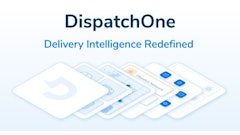
Technological advances promise to help address some of the issues that plague the global supply chain sector, but they’d get there faster if the government would get out of the way. No, regulators should not entirely get out of the way – there’s a need for someone to help ensure free and fair trade and ease of borders.
But, when it comes to technology, there are some clear and simple things that can be done to help encourage autonomous and drone delivery for the last mile.
Package delivery by drone offers long-term and lasting improvements to the environment and consumer convenience. Currently, the last-mile of the delivery chain – that distance between distribution hubs and consumers’ homes – is both inefficient and environmentally harmful.
Most of us witness the inefficiency every day as the line of deliver and unmarked private trucks, vans and cars circle city blocks repeatedly as human beings drive from Point A to B to D and back to A again delivering packages to porches. Delivery companies work hard to maximize trips and minimize fuel and other costs, but the miles still add up.
On average in the United States, every day, 100 million packages are delivered this way. More than 90% of those packages weigh 5 pounds or less, and close to 23 million Americans have had a package stolen by porch pirates. The pandemic has only increased American’s penchant to order online, causing demand for faster delivery of those goods.
Drone delivery – ideally to a secure, smart mailbox – will enable those cargo vans to park in a central location and send out drones to deliver to homes within a few blocks, saving all that circling and idling. Drivers can then re-supply and move on to serve another neighborhood from the air.
Delivering in this manner could reduce carbon dioxide emissions by 8,000 tons, and 35 million vehicle kilometers could be saved each year, according to an Australian study. Drone delivery to a secure, smart mailbox saves time, money and physical exertion by:
· Reducing expense. The average cost of last-mile drone delivery is $1 compared to $2 by truck.
· Increasing efficiency. Drone delivery eliminates the need for trucks to drive repeatedly through neighborhoods.
· Saving physical exertion on the part of the delivery person.
· Providing package security. Packages are locked in the mailbox and opened only via app.
· Providing a charging station to keep the drones flying; and
· Boosting the Long Range (LoRa) network with hotspots for Helium’s People’s Network and using lower bandwidth sensors instead of relying on cellular networks where possible.
Widespread adoption of last-mile delivery drones secured by individual smart mailboxes will significantly reduce accident occurrence rates. An Alpha Beta study cited showed increased drone delivery could prevent 70 road accidents a year in Australia. Increased use of drone delivery could also spur production and technology advances in that industry as well. Noise is also a concern to some.
Once the industry takes off, issues like that will be more readily addressed, and drone delivery will only get faster, better and probably quieter. New jobs will be created, and drone pilots will need to get training and expertise. The ripple effects are hard to quantify.
Many other countries are ahead of the United States in rolling out drone delivery. Policy makers seem eager to relax regulations for truck drivers, but they should be as quick to encourage drone regulation as well. Industry experts project double-digit growth for the drone delivery sector in the next few years if regulations are eased. Relax the “line of sight” regulations as well as those that currently prevent night-time drone flying and the ability to fly drones over crowds are also areas where real-life experience should drive regulations rather than have regulations keep those activities from happening.
If pilots can be free to hone their skills, real-time use will show regulators what’s needed. Drone delivery technology is moving too fast for the regulatory process to keep up. Just as they did with telecommunications, regulators should get out of the way and let the market drive this sector.
Drone delivery is a nascent industry. For it to flourish, we need to free the skies and let the drones fly. Right now, drone delivery is accomplished in the U.S. fields and yards, sometimes with a parachute to protect landings. Widespread pilot projects will get drones flying everywhere to see what kinds of limitations are truly needed and which are just impeding progress.
Once this industry is let loose, consumers will demand a better way to receive their goods, and certain manufacturers will demand it, too. Prescription medication or other expensive or regulated products will need better protection than the porch or yard currently provide.
The best way for those kinds of receptacles to be designed, created and improved upon is to relax regulations that currently impede drone delivery.
![Pros To Know 2026 [color]](https://img.sdcexec.com/mindful/acbm/workspaces/default/uploads/2025/08/prostoknow-2026-color.mduFvhpgMk.png?auto=format%2Ccompress&bg=fff&fill-color=fff&fit=fill&h=100&q=70&w=100)








![Pros To Know 2026 [color]](https://img.sdcexec.com/mindful/acbm/workspaces/default/uploads/2025/08/prostoknow-2026-color.mduFvhpgMk.png?ar=16%3A9&auto=format%2Ccompress&bg=fff&fill-color=fff&fit=fill&h=135&q=70&w=240)








